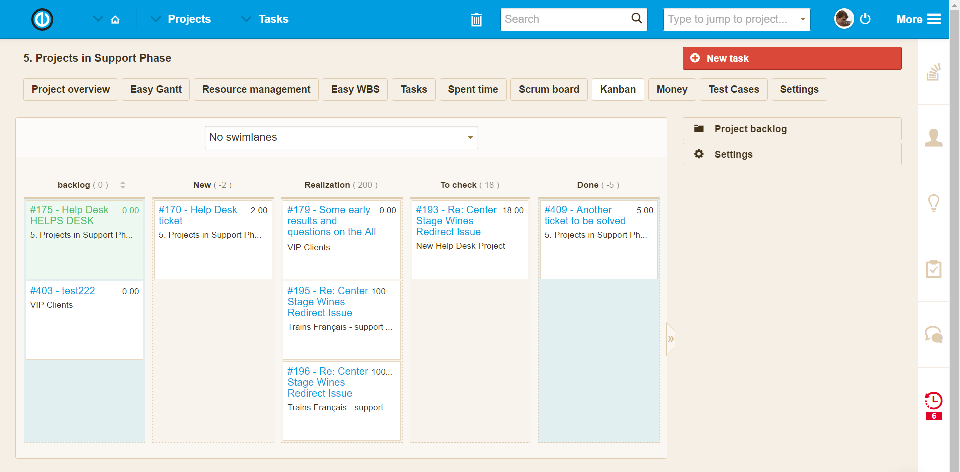Kanban for Redmine Yes or No? Benefits and Costs for Project Management
With a wealth of project management strategies that aim to optimize your team's workflow, it is difficult to choose the best of them. One strategy to consider is Kanban.

What is Kanban Board?
The Kanban methodology was developed by Toyota in the 1940s. It was used as a planning system to support timely production to minimize idle time in production. To facilitate production, Japanese laborers handed the card, so-called "Kanban", to other teams on which the level of production capacity was recorded. In the simplest form, Kanban consists of several elements: a bulletin board, list of stages, and several cards. The board is divided into stages that represent your workflow. Then you determine how you want to move cards or tasks from one stage to another.
Usage of Kanban board
The Kanban methodology goes far beyond the factory boundary. You can find the adoption of this methodology in the following areas:
- Business teams use Kanban to manage their sales plan. It provides an overview of sales opportunities and promotes dialogue within sales teams as well as between sales and supply teams.
- Software development teams apply the same principles for the development cycle. They try to adapt the work to the team's capacity. This gives teams some transparency in their work, allowing them to be flexible in their planning options.
- Customer support teams have been one of the first users in the IT industry. The Kanban system was used to manage ticket flow from customers. It gave the agents visibility of new tickets and showed at which stage of the solution the others are currently in.
Benefits and costs of Kanban board
Kanban is less structured than other project methodologies. The traditional approach to project management (TPM) creates tasks in a linear order with an emphasis on planning and design before the project starts. Kanban, on the other hand, has a free approach and lacks a procedural framework. Some of the benefits of this solution for your team and business are:
- Process flexibility
- Define a workflow that suits your team's needs
- Easy implementation and understanding
- Improves and simplifies the flow of supplies
- Allows a continuous workflow
- Rather driven by events rather than a time-based approach
- It works well for cohesive and proactive teams
Costs for the Kanban system may vary. They can range from a free online tool providing an easy-to-use notice board up to purchasing a system with a license or subscription pricing model. It depends on your needs. You can create TPM tools in a spreadsheet or in a more advanced tool such as Easy Redmine. Unlike many other Kanban tools, Easy Redmine offers you a complete project management solution for every part of your business, eliminating the chaos of many badly integrated tools.
Kanban, Help Desk, CRM, and much more in one solution, try it for yourself! Using Kanban or any project strategy requires an assessment of the needs and requirements of teams and businesses. Deploying this system can deliver your business results to your team through a continuous and flexible workflow.
